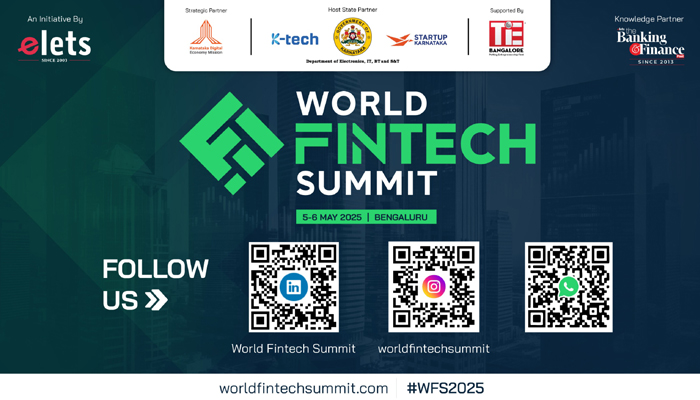Once characterised by long queues and cumbersome paperwork, the banking sector has transformed tremendously over the last ten years. From the emergence of the Unified Payments Interface (UPI) to the widespread adoption of Artificial Intelligence (AI) and Machine Learning (ML), the landscape has journeyed from traditional to digital banking, navigated by both technological innovation and proactive regulatory measures. Banking has become faster, smarter, and more secure in the past decade.
The UPI Revolution: Instant Pay, Everyday
Remember the days people waited in long ATM queues? Those days became history after the introduction of the Unified Payments Interface (UPI). Launched in April 2016 by the National Payments Corporation of India (NPCI), UPI allowed instant money transfers between bank accounts using a mobile phone
The explosive growth of UPI showed how quickly India embraced digital payments.
Additionally, the government and RBI’s coordinated efforts to push digital payments helped make them the norm. Two years later, in August 2018, UPI 2.0 was launched, bringing in features like an overdraft facility, one-time mandate, invoice in the inboX, and signed intent/QR, making it even more user-friendly.
It is fast, it is easy, and it is secure! Soon enough, other players like Google Pay, PhonePe, Paytm and other apps joined in, making cash almost obsolete. There were 581 banks actively implementing UPI as of April 2024. During this time, there were 15.08 billion digital transactions with a total value of US$ 25.27 billion (around Rs. 2.1 trillion), the India Brand Equity Foundation (IBEF) reported. Whether paying for a cup of tea or the electricity bill, people now mostly rely on UPI for all transactions.
Fintech: The Digital Disruptors
With over 2,000 fintech startups and a market value projected to hit $150 billion by 2025, it is clear that technology and finance are a match made in heaven. These startups are not just playing around; they’re changing how we think about banking.
Digital lending platforms are on the rise and are expected to surpass $720 billion by 2030, IBEF reported. Platforms like Lendingkart, Faircent, and MoneyTap have made it easier for individuals and SMEs to access credit. These platforms use advanced algorithms and AI to assess creditworthiness and disburse loans quickly.
Additionally, apps like Groww, Zerodha, and UpstoX have democratised investment tech, allowing even novice investors to trade stocks, mutual funds, and more with ease.
From mobile wallets to robo-advisors, fintech makes banking more accessible and efficient. Need a loan? There’s an app for that. Want to invest? There’s an app for that too.
Fintech is making sure banking services are just a tap away.
Tech Takeover: AI, Blockchain, and More
The tech takeover is transforming the banking industry. Here is a quick rundown of the latest tech trends:
- AI and ML: Artificial Intelligence and Machine Learning help banks automate customer service with chatbots, detect fraud, and even predict loan defaults. AI in banking is not just about chatbots. It is about predictive analytics for better customer insights, risk management, and compliance. For example, HDFC Bank’s EVA (Electronic Virtual Assistant) has answered millions of queries with high accuracy, improving customer satisfaction and operational efficiency.
- Blockchain: This tech is making banking transactions secure and transparent. It is like having an unbreakable digital ledger that keeps everyone honest. Blockchain’s potential extends to various applications in banking, such as cross-border payments, trade finance, and smart contracts. The RBI and several banks are exploring blockchain to enhance security and efficiency.
- Biometrics: Fingerprint and facial recognition make transactions faster and safer. Biometrics are not just about convenience; they’re about security. Banks like ICICI and Yes Bank have integrated biometric authentication into their mobile apps, providing an additional layer of security for transactions.
- Cloud Banking: Banks have bid adieu to physical servers and have started relying on cloud services to streamline operations and reduce costs. Cloud banking allows for better data management, scalability, and disaster recovery. Banks like SBI and HDFC have adopted cloud solutions to enhance their digital offerings and improve operational efficiency.
Retail Banking: From Industrial to Individual
There has been a major shift from lending to industries to focusing on retail customers. Retail loans saw an upward growth from 2013 to 2022.
This shift happened because public sector banks went overboard with industrial loans in the early 2000s, leading to a mountain of bad loans. Now, banks prefer lending to individuals for things like home and personal loans, considered safer bets.
The growing middle class and increasing demand for financial products have also driven the focus on retail banking. Home loans, personal loans, and auto loans have seen significant growth, driven by attractive interest rates and easier access to credit.
Financial Inclusion: Banking for All
India has made huge strides in financial inclusion. Programs like the Pradhan Mantri Jan Dhan Yojana have brought millions into banking. As of now, 100% of new bank accounts in rural areas are opened digitally. Small finance banks and payment banks are targeting underserved areas, ensuring that banking services reach every corner of the country.
Also Read | Why eKYC and vKYC are effective tools against fraud in the banking industry
Jan Dhan Yojana, launched in 2014, aimed to provide every household with a bank account. By 2023, over 460 million accounts had been opened under this scheme, with a total balance exceeding ₹1.75 trillion. This initiative has increased financial inclusion and provided a platform for direct benefit transfers and other government schemes.
Privatisation and Consolidation: The New Normal
Public sector banks have lost ground to private banks over the past decade. In 2010, public sector banks held 75.1% of all loans, but by 2022, their share had dropped to 54.5%, RBI informed through their publication ‘Basic Statistical Return on Credit by Scheduled Commercial Banks (SCBs) in India – March 2023’.
This shift is partly due to the rise of bad loans in public banks, leading to a wave of privatisation and consolidation. Big mergers like the one between Fincare Small Finance Bank and AU Small Finance Bank have also reshaped the landscape.
The consolidation of public sector banks aimed to create stronger and more efficient banking entities. In 2019, the government announced the merger of 10 public sector banks into four, reducing the number of PSBs from 27 to 12., to increase their competitive edge and operational efficiency.
Cybersecurity: Locking It Down
With great power comes great responsibility, and with digital banking comes the need for top-notch security. Banks are investing heavily in cybersecurity to protect against hacks, data breaches, and other threats. AI and machine learning are also being used to enhance security measures and keep your money safe.
Cybersecurity in banking involves multiple layers of protection, including encryption, multi-factor authentication, and continuous monitoring. The RBI has issued several guidelines to enhance cybersecurity in banks, including the recent mandate to appoint Chief Information Security Officers (CISOs) and regular security audits.
Digital Transformation: The New Normal
The digital transformation in Indian banking has been a multi-faceted journey involving adopting new technologies, process re-engineering, and
a shift in customer engagement strategies. Here are some of the key aspects:
- Branchless Banking: The concept of branchless banking has gained traction, with many banks offering a range of services online or through mobile apps. This has reduced the need for physical branches, lowered operational costs, and improved accessibility for customers in remote areas.
- Mobile Banking: With over a billion mobile phone users in India, mobile banking has grown exponentially. Banks have developed user-friendly mobile apps that allow customers to perform a
wide range of transactions, from checking account balances to making payments and applying for loans. - Digital Onboarding: The onboarding process for new customers has been digitised, making it quicker and more efficient. E-KYC (Know Your Customer) processes, supported by Aadhaar, have simplified customer verification and reduced paperwork.
- Digital Wallets and Payment Banks: Companies like Paytm, PhonePe, and Google Pay have become household names, providing seamless payment solutions and digital wallets. Payment banks, which can accept deposits but not lend, have also contributed to the financial inclusion drive.
The Regulatory Landscape: Steering the Ship
The Reserve Bank of India (RBI) has ensured our banking system stays updated and resilient. Here is how the RBI has kept everything in check:
- PCA Framework: Think of the Prompt Corrective Action (PCA) framework as the RBI’s saying, “Get your act together!” Banks with too many bad loans or low capital must follow strict rules to fiX their mess. This has helped prevent bank failures and kept the system solid.
- Financial Stability Reports (FSR): The RBI issues these reports to monitor the banking system’s overall health. They highlight potential risks and ensure everyone is on the same page about what’s happening in the financial world.
- Basel III Norms: The RBI has enforced international banking regulations to ensure banks have enough cash on hand and can handle financial shocks. It is like making sure everyone has their safety nets ready.
- Insolvency and Bankruptcy Code (IBC): Introduced in 2016, the IBC has been a game-changer for handling bad loans. It provides a clear and fast way to deal with bankrupt companies, helping banks clean up their balance sheets and move on.
- Digital Payment Regulations: With the boom in digital payments, the RBI has set rules to keep transactions safe. They’ve pushed for tokenisation and more robust cybersecurity measures to protect us from fraudsters.
Also Read | Innovative fintech models disrupting the banking industry
The Future of Banking: What Lies Ahead
So what is next in the banking industry?
- Quantum Computing: Imagine superfast, supersmart computers that can solve complex problems in seconds. That is quantum computing, and banks are exploring this technology to enhance security and crunch massive data sets.
- Metaverse Banking: With the rise of virtual reality, banks might soon have virtual branches where one can interact with avatars for their banking needs. It is like The Sims but for real money.
- Sustainable Finance: Climate change is real, and banks are jumping on the green bandwagon. EXpect more focus on financing eco-friendly projects and integrating sustainability into their operations.
- DeFi (Decentralised Finance): DeFi platforms offer financial services on the blockchain without traditional banks. This means more transparency, lower costs, and new money management methods.
- RegTech and SupTech: Regulatory Technology (RegTech) and Supervisory Technology (SupTech) are improving compliance and oversight. AI, big data, and blockchain are helping regulators monitor the situation without drowning in paperwork.
A Decade of Transformation
We have seen the banking industry transform dramatically over the past decade and are walking towards a future where the possibility of technological innovations permeating every aspect of our lives is very high. Innovations and developments will continue happening, making the possibilities limitless and exciting.
As we stand on the cusp of this new era, it’s clear that the journey of innovation and improvement is far from over. So, whether it’s through quantum computing, virtual realities, or sustainable practices, the next decade promises to be a thrilling ride of technological advancements and changes.
Elets The Banking and Finance Post Magazine has carved out a niche for itself in the crowded market with exclusive & unique content. Get in-depth insights on trend-setting innovations & transformation in the BFSI sector. Best offers for Print + Digital issues! Subscribe here➔ www.eletsonline.com/subscription/




















